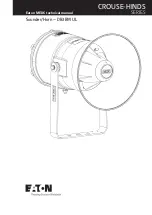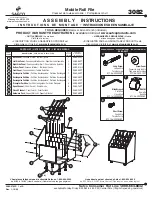
6
Due to the nature of the line sensor there is freedom to choose what range of pixels either side of the
centre point are used in calculating a focus error signal. This allows the rejection of reflections from
spurious reflective surfaces and offers great flexibility when dealing with various different samples.
The addition of adjustable laser collimation also allows the reflective surface, used by PureFocus for
holding focus, to be located at a different plane to the microscope’s imaging plane, where the
specimen resides. This allows for continuously variable offsets to be added. This is especially useful
when dealing with biological samples where the specimen will reside under a coverslip, which has a
reflective top surface (Fig. 2).
To form a focus error signal firstly the system sums the pixel values to the left and right of a defined
centre pixel on the sensor, these summations are named A and B respectively. The number of pixels
that are summed either side of the centre to generate A and B can be chosen. The command
PINHOLE allows the centre point and width to be set. The sensor has 1500 pixels so the maximum
possible width is 750 pixels, for a centre point in the exact centre of the sensor at pixel 750.







































